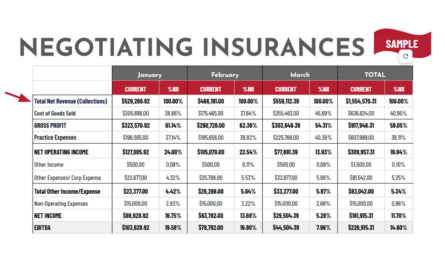It’s time for a culture of patient safety in the dental setting
Sometimes, out of bad news, good things come. That might be the case with infection prevention and dentistry.
“The recent stories in the popular media about breaches in infection control in dentistry provide an opportunity for healthcare personnel to evaluate their current infection control and safety practices, and look for ways to both monitor and improve in areas such as instrument sterilization, prevention of cross-contamination and medical waste management,” says Eve Cuny, director of environmental health and safety and assistant professor in the department of dental practice at Pacific Dugoni School of Dentistry, and a presenter at the OSAP 2013 Symposium in San Diego.
But it’s not just the well-publicized Oklahoma breach that is bringing about change. It’s broader than that. “The discussion about safety culture in dentistry is gaining momentum,” says Cuny. “The patient safety culture in medicine was revolutionary, and could be a predictor of a major shift in how we look at the patient experience in dentistry.”
Fostering a culture of safety in healthcare is part of the broader move to improve healthcare quality, says Cuny. “In the 2001 Institute of Medicine report, ‘Crossing the Quality Chasm; A New Health System for the 21st Century,’ safe care is identified as one of the six aims for improvement – along with care being effective, patient-centered, timely, efficient and equitable. It’s an essential element of improving the healthcare delivery system in the United States, of which oral health must be part.”
The role oral health professionals can play in overall health is indeed growing, says Cuny. “With the development of rapid screening for HIV and HCV in recent years, in addition to the more traditional screenings, such as blood pressure and diabetes, there is an increasing opportunity for oral healthcare providers to participate more fully in preventive health for their patients.”
No one-shot deal
It’s true that there’s always room for improvement in terms of creating a culture of safety in the dental setting, says Dr. Fiona Collins, who presented at the OSAP Symposium. However, today’s clinicians and dental office staff are cognizant of the importance of safety and infection prevention, notwithstanding the publicized breaches in Oklahoma and elsewhere. “Those really are the exception,” she says.
A culture of safety isn’t a one-shot deal. It calls for continuous improvement and mindfulness on the part of everyone in the office, says Collins. Quality initiatives must be implemented, and barriers identified and dealt with. Continuous monitoring on the part of the entire dental team is a part of this. “It has to be part of daily life and reality.”
Patients themselves are much more aware of the need for infection prevention, particularly in light of recent breaches, adds Collins. “Certainly they are aware of it, and they look at the office, talk to the staff and clinicians, and ask questions. That rarely happened 20 years ago.” For this reason, it’s important to not only adhere to infection control protocols, but to also demonstrate to patients that the office takes infection control seriously, and that there are protocols in place to protect patients, the dental team, and the community at large.
Sidebar:
Can bad news lead to good things?
For the dental community, following the recent stories about breaches in infection control, that may be the case. Safety practices are in the spotlight. Now is the perfect time to have the discussion.
Fostering a culture of safety in healthcare is part of the broader move to improve healthcare quality, says Cuny. Oral health professionals can play an increasing role in overall health. “With the development of rapid screening for HIV and HCV in recent years, in addition to the more traditional screenings, such as blood pressure and diabetes, there is an increasing opportunity for oral healthcare providers to participate more fully in preventive health for their patients.”
The patient safety conversation isn’t a one-time thing. It calls for continuous improvement and mindfulness on the part of everyone in the office, says Collins. Quality initiatives must be implemented, and barriers identified and dealt with. Continuous monitoring on the part of the entire dental team is a part of this. “It has to be part of daily life and reality.”





